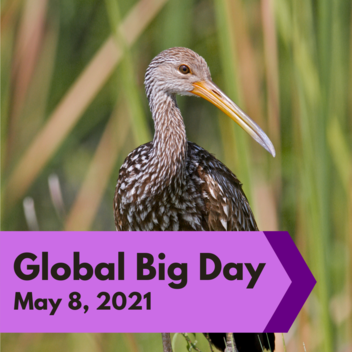
Be a part of birding’s biggest team! Global Big Day is an annual celebration of the birds around you. No matter where you are, join virtually on May 8th, help celebrate World Migratory Bird Day, and share the birds you find with eBird.
Participating is easy—you can even be part of Global Big Day from home. If you can spare 5 or 10 minutes, report your bird observations to eBird online or with the free eBird Mobile app. If you have more time, submit checklists of birds throughout the day. You never know what you might spot. Your observations help us better understand global bird populations by contributing to products like these animated abundance maps brought to you by eBird Science.
Last year, Global Big Day brought more birders together virtually than ever before. More than 50,000 people from 175 countries submitted a staggering 120,000 checklists with eBird, setting a new world record for a single day of birding. Will you help us surpass last year’s records?
Learn more about how to participate!
Source: ebird.org
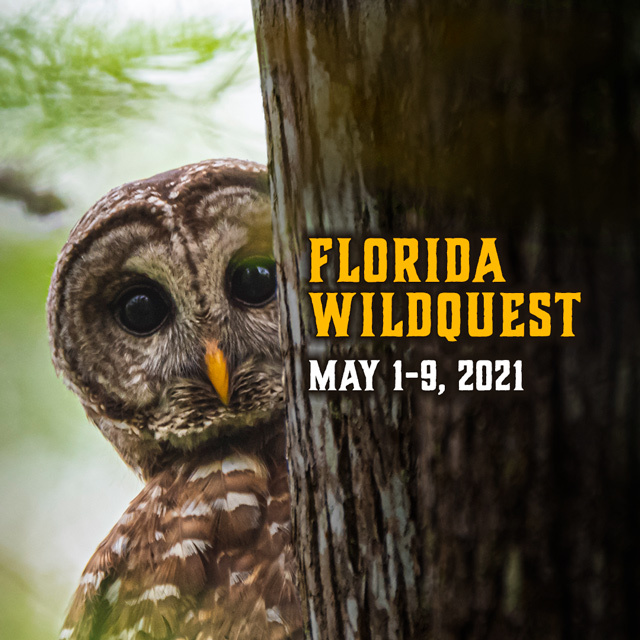
Don’t forget that Florida WildQuest begins tomorrow! This fun scavenger hunt game will help you get to know FWC’s wildlife management area (WMA) system and all of the exciting wildlife viewing opportunities to be had.
Go on a WildQuest scavenger hunt with your family, friends or as a solo adventurer. Use the app to record photos and videos, responding to fun prompts and earning points as you go. While you play, you’ll be learning all about the plants, animals and history of Florida’s WMAs.
Watch other players’ submissions roll in in real-time and track your own progress on the leaderboard. Earn 2000 points to be eligible for random prize drawings. Don’t worry - It’s easier than it sounds!
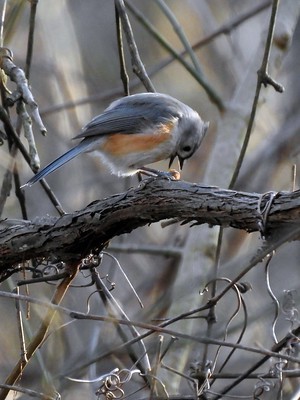 Tufted titmice are often found foraging in mixed species flocks. Photo: U.S. Fish and Wildlife
Most birders are very familiar with the experience: walking through the woods on a quiet day, listening for bird activity but seeing or hearing very little – when suddenly, seemingly out of nowhere, there is a frenzy of activity in the treetops. Tufted Titmice and Caroline Chickadees grab your attention first, making a ruckus as they flit from branch to branch. Look up through your binoculars and you’ll see they also might be joined by nuthatches, kinglets, warblers and woodpeckers. It’s always a treat to see a mixed-species flock, but why do these birds flock together?
There are two main theories to explain why these species might band together. First, more birds in a flock means there are more eyes to look out for potential predators. Birds that join mixed species flocks tend to have several traits that make them more vulnerable – they are small, forage high in the canopy and are very active foragers rather than sit-and-wait predators, meaning they don’t have the luxury to always be on the lookout for danger. When they gather together in larger groups it is far more likely that someone will spot an incoming hawk and sound the alarm.
Foraging together might also mean that it’s easier to find food in the first place. Just as a birder can’t help notice the loud calls of a group of foragers, insects can be stirred up as well, making them easier to find – and most species that join mixed flocks are primarily insect eaters. You might wonder if this means there is a lot of competition between birds for these tasty bugs but some studies have shown that different species tend to forage in slightly different places. Some might look in curled leaves, while others might glean bugs off branches or tree trunks. This is called niche partitioning; if every species has their own preferred place to forage, they’re much less likely to get in each other’s way and fight over food.
Researchers continue to study this fascinating behavior and have found evidence for both of these theories – it is probably the case that both contribute to the formation of these groups. But one thing is certain – happening upon a mixed-species flock is always a special treat for a birder.
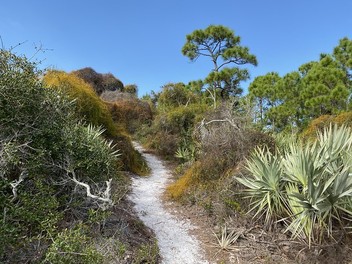 Photo: Judy Gallagher
This refuge has two very different access points for exploration. At the headquarters on U.S. Highway 1, the trails wind through coastal scrub down to a white sand beach lined with mangroves at the Intracoastal Waterway. Here, you can watch for waders, such as Yellow-crowned Night Herons, as well as Ospreys and Least Terns soaring overhead. In October and April, explore the scrub habitat to listen for songbirds. Black-throated Blue Warblers forage here just prior to departing on or just after returning from their long overwater migrations. The beach access on Jupiter Island offers one of the last undeveloped stretches of Atlantic beachfront in south Florida. Watch for shorebirds, such as Wilson’s Plover, loons and Northern Gannets, in winter and Magnificent Frigatebirds overhead in summer. You might also see marked sea turtle nests as you enjoy the natural beauty of this area.
13640 U.S. Highway 1, Hobe Sound, 33475
Open: Daily, sunrise to sunset
Website
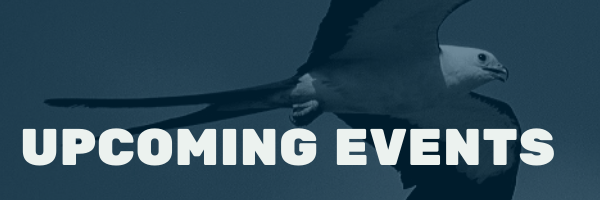
May 1 – 9: Florida WildQuest (Statewide)
May 6 – Local Conservation Projects of St. Lucie County (Online)
May 8 – Fish Island Bird Walk (St. Augustine)
May 8 - Global Big Day at Ocala Wetland (Ocala)
May 12 - SJCA Monthly Meeting: Shorebird Stewarding with Jean Olbert (Online)
May 15 - Nature Walk and Work Day: Crosby Sanctuary (Orange Park)
May 17 - Monthly Program: "Introduction to Ethical Investing" (Online)
May 21 - EagleWatch: Monitoring Bald Eagle Nests in Florida (Online)
May 22 – Open house at Crosby Sanctuary (Orange Park)
May 23 - Forest Bathing Meditation at Crosby Sanctuary (Orange Park)
May 13 – Thursday Morning at the Matanzas Inlet with Peggy Cook (St. Augustine)
Do you know about any other bird or wildlife-related events going on in Florida? Help spread the word by letting us know! Send in the times, dates, locations and contacts to WildlifeViewing@MyFWC.com for posting on the Great Florida Birding and Wildlife Trail website.
Events must be related to birds or other wildlife and must be open to the public. Examples include field trips, interpretive programming, webinars, summer camps and family programs.
|